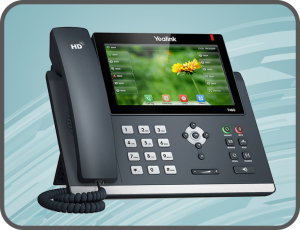With Openreach planning to end support for PSTN and ISDN services in 2025, businesses are seeking to procure new office phone solutions in greater numbers. In the UK’s commercial sector, SIP trunking is proving to be a popular replacement for traditional phone lines.
What is SIP trunking protocol?
SIP (Session Initiation Protocol) is a communications solution that uses the internet to transfer data between users, including audio and video.
Businesses which have implemented a cloud-based phone system can bypass the traditional telephone network. Instead, all that is required is a broadband connection.
SIP enables a virtual connection between your business and your ITSP (internet telephony service provider) via the internet. It is worth noting that a SIP trunk is not a physical connection.
How does SIP trunking work?
In very simple terms, a SIP trunk is effectively a single IP connection established using a protocol (set of instructions) specifically designed for streaming media (voice, text, images or video) over the internet between two points.
In telecommunications, the term trunking typically refers to a network of cables used to complete a circuit between a private branch exchange (PBX) and the telephone company or service provider. With SIP trunking this distribution model remains the same, except rather than a physical trunk line, the connection is virtual: the internet acts as the connecting medium.
What’s the difference between SIP and VoIP?
Although SIP and VoIP are complementary technologies, many users struggle to differentiate between these terms.
SIP is an enabler protocol for establishing, connecting and terminating IP telephony sessions. The key difference is that VoIP can only be used to establish voice calls, whereas SIP is more complex in its scope, allowing for the transmission of a variety of media. In order to work, VoIP systems generally rely on a connection provided via SIP trunking.
While SIP is basically an industry standard for IP telephony at this point, not all VoIP systems are compatible with SIP. For example, Skype – one of the most ubiquitous and well-known VoIP products, eschews SIP in favour of its own peer-to-peer technology. However, most business-grade systems do utilise SIP connections.

Advantages and disadvantages of SIP protocol
Businesses which switch to cloud-based telephony systems have much to gain from the efficiencies the technology can provide. But the decision is not without certain considerations: being a digital solution, the way internet-based systems work is different to a traditional PSTN set up.
Advantages
- For many businesses, the primary advantage of SIP trunking is the capacity to transmit multimedia This is of particular benefit to organisations that need to engage in video conferencing, or employees who work remotely and require access to company data.
- Businesses looking to upgrade their phone systems will often favour a SIP-based solution as it is future proof. With the planned PSTN switch off, investing in a new landline set up may be difficult to justify as a further upgrade would be required in the short- to medium term.
- Another benefit to SIP is the potential for cost reduction. The need for an additional phone contract will be mitigated, as SIP relies on an existing broadband connection, with installation and engineering fees also being avoided.
- SIP phone systems also easily scalable. New users and connections can be added often just by adjusting software settings and additional handsets. This means your set up can be adapted without the cost or labour required to install or decommission physical connections, saving money and time.
- The SIP protocol is compatible with a variety of other telephony protocols. This means that if you need to communicate with a client or customer using a different system, a SIP set up can adapt the instruction set it utilises to allow it to communicate with the connecting system – a huge advantage to organisations dealing with multiple clients who may use competing IP telephony technologies.

Disadvantages
- Unfortunately, a SIP trunking system can be complicated to set up. This means it will only be suited to a company with access to robust and knowledgeable IT support services. It can be unsuitable for smaller business who may lack the resources to implement and support such a system. This being said, some providers, such as Structured Communications, offer the option for a fully managed SIP trunking solution, making it more accessible for smaller businesses.
- Another drawback is the fact that it is reliant on an internet connection. Although this is a key feature in itself, if your broadband connection were to drop you would also lose access to your phone systems. This risk can be mitigated by opting for a reliable ISP.
As telecommunications experts, Structured Communications provide efficient and effective IP telephony solutions to organisations across a variety of sectors. To find out more about how you could benefit from our experience, please don’t hesitate to get in touch.

